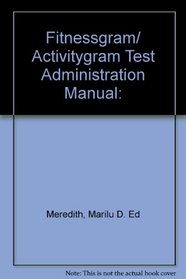Search -
Fitnessgram/Activitygram Test Administration Manual
Fitnessgram/Activitygram Test Administration Manual
Author:
? Set individualized goals for students ? Give students responsibility for managing and recording their own activities ? Help students understand the value of physical activity and make healthy behaviors and choices a lifelong habit This fully updated manual now includes a DVD with video clips to help teachers administer the FITNESSGRAM... more »
Author:
? Set individualized goals for students ? Give students responsibility for managing and recording their own activities ? Help students understand the value of physical activity and make healthy behaviors and choices a lifelong habit This fully updated manual now includes a DVD with video clips to help teachers administer the FITNESSGRAM... more »
ISBN-13: 9780736058667
ISBN-10: 0736058664
Pages: 134
Edition: 3 Pap/DVD
Rating: ?
ISBN-10: 0736058664
Pages: 134
Edition: 3 Pap/DVD
Rating: ?
0 stars, based on 0 rating
Publisher: Human Kinetics Publishers
Book Type: Paperback
Members Wishing: 0
Reviews: Amazon | Write a Review
Book Type: Paperback
Members Wishing: 0
Reviews: Amazon | Write a Review
Genres:
- Health, Fitness & Dieting >> Exercise & Fitness >> Aerobics
- Health, Fitness & Dieting >> Exercise & Fitness >> General
- Health, Fitness & Dieting >> Exercise & Fitness >> For Children
- Health, Fitness & Dieting >> General
- Medicine >> Specialties >> Sports Medicine




